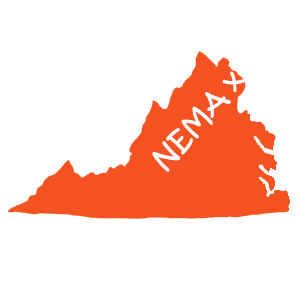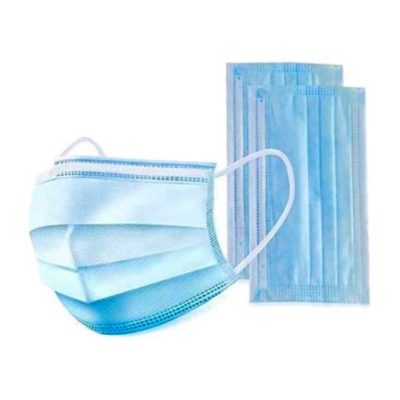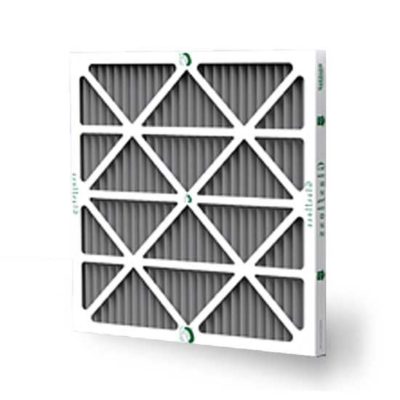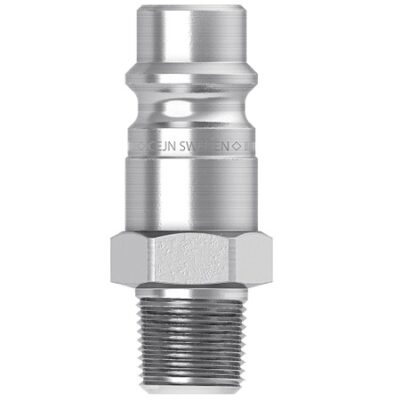How can I tell if my enclosure cooling isn’t working?
Are there signs that my panel cooler is malfunctioning?
Will I be able to tell that my equipment is too hot?
Am I using the right equipment for my space?
Symptoms of Poor Enclosure Cooling
Below is a comprehensive list of tell-tale signs your enclosure air conditioner isn’t working properly:
- If it feels too hot, it probably is
- Nuisance Tripping
- Unexpected equipment failure
- Burnt electrical contacts and connections
- Hot Spots
- PLCs crash for no obvious reason but then work normally after resetting
- HMI screens go dark
- Excessive dust/dirt inside enclosure
- Blown fuses with no evidence of circuit fault
- Common failure patterns
- Relay Failures
- Burnt out contactor coils and indicator lamp failures
1. Using an Oversized Enclosure Air Conditioner
PROBLEM:
Our first instinct when solving problems, especially those most infuriating to us, is to go big or go home to prevent dealing with the issue again. But in the case of panel coolers, bigger does not necessarily mean better.
Large enclosure air conditioner units can work too well, bringing temperatures down too quickly, causing issues for your equipment. The duty cycle will be too low for humidity control and the compressor will cycle frequently and excessively due to swinging temperatures. Damaged and over-worn equipment can lead to repairs that will result in a loss of money and cause downtime.
SOLUTION:
Using a BTUH calculator is the perfect solution to enclosure air conditioner sizing. The ISC Sales BTUH calculator takes into account all crucial factors for determining the most effective panel cooler; enclosure dimensions, environmental temperatures, heat load (See Step 7 for more on Heat Load Calculation), enclosure materials, insolation, location, ambient air conditions and even paint color.
Did you know?
Before BTUs, air conditioner output ratings were judged by how much ice you would need to get the same cooling power
2. Placing Unit in Ventilated Enclosures
PROBLEM:
The nooks and crannies left unsealed after installing a panel cooler into a ventilated area allow hot air to creep into your enclosure. Warm outside air entering your cabinet will cause the internal temperature to rise, triggering your panel cooler to work harder and run longer, resulting in higher electricity bills.
The overuse of the enclosure air conditioner will also cause unnecessary wear and tear, leading to costly repairs, equipment replacements and eventual entire system failure.
SOLUTION:
Sealing off all openings will prevent outside elements from invading your enclosure. It is essential to the life of your equipment that you protect your cabinet from anything that can negatively impact the enclosure air conditioner’s performance.
Did you know?
*Myth* Duct tape is good at sealing. Seals repaired with duct tape usually fail within a year.
3. Leaving Doors Open
PROBLEM:
Open doors leave equipment vulnerable to the harmful environment it is being protected from. Hot air, dust, dirt and humidity can all wreak havoc on your control cabinet.
We have already discussed why hot air can be a nuisance to your system, but dirt and humidity can be just as devastating. Dust clogs filters causing a decrease in enclosure air conditioner performance. In large amounts dirt acts as a blanket, trapping more heat inside the cabinet.
Condensation created by humidity in electrical cabinets causes failure to internal electrical components. This means more cash down the drain for repairs that could have been avoided.
SOLUTION:
Exposed cabinets are unavoidable when enclosures are located in heavy traffic areas. To prevent abuse to the panel cooler, a door interlock switch can be installed. The switch cuts power to the cooler when the door is ajar, preventing equipment from unnecessary operation.
4. Cutting Costs Where You Shouldn’t
PROBLEM:
Everyone likes to save a penny or two if possible, but skimping on equipment costs while choosing an enclosure air conditioner will lead to larger, more expensive issues down the road. Money will be saved in the long run by investing in the proper equipment for the space early on.
SOLUTION:
Consult the UL rating, thermal capacity at operating temperature, condensate handling, power consumption, enclosure protection and cost of spare parts. This information is a valuable resource when trying to decide on what equipment will work best.
There are also some great additions that can be made to your existing cooling system. For example, a condensate evaporation package makes the enclosure air conditioner run more efficiently while cutting down on energy costs. Sometimes, spending more means a greater pay off in the end.
Did you know?
Willis Carrier, the inventor of the modern ac unit, came up with the concept while working at a publishing company. Heat was causing paper to wrinkle and ink to run.
5. Installing and Then Ignoring Enclosure Air Conditioners
PROBLEM:
It is human nature to forget about a problem once it has been resolved. However, neglecting enclosure air conditioner maintenance can be costly. Like any other important investment, it is fundamental to follow up.
Buildup of dust, debris and other items will counteract the cooling system by raising the internal heat of the cabinet.
SOLUTION:
Regularly scheduled maintenance is an easy fix. Book it and forget it. If that is unavailable, there are other low maintenance options available.
A remote monitor may be a practical solution. The monitoring equipment can remotely control, observe and alarm the cooling functions of the electrical enclosure air conditioner by using a PLC (programmable logic controller) linked to an industrial network or personal computer.
6. Using the Incorrect NEMA Enclosure Rating
PROBLEM:
The National Electrical Manufacturer’s Association (NEMA) ratings reflect what the enclosure’s intended use is for, from small pushbutton boxes to large, full-sized room enclosures.
NEMA ratings standardize product specifications while establishing performance criteria, or in other words, ratings ensure that consumers are purchasing the correct enclosure to house their electrical components based on its environment and the type of equipment inside.
It is important for the panel cooler to have the same NEMA rating. Using a differently rated enclosure will negate NEMA standards. It is especially critical for hazardous duty enclosure air conditioners. This specialty type of panel cooler will be exposed to harsher environments and will need more protection.
SOLUTION:
Carefully take into account the conditions the enclosure will be exposed to. Remember pricing will increase depending on the level of protection needed, don’t pay for more than what is necessary.
You wouldn’t want to purchase an enclosure with a NEMA rating of 11, that protects equipment from oil submersion, corrosive gasses and liquids when you really only need an enclosure with a five rating, that will protect from dust, dirt and occasional contact with non-corrosive liquids.
Did you know?
NEMA was founded in 1926. Their headquarters is located just outside of Washington D.C., in Rosslyn, Virginia.
7. Updating Electrical Equipment without Reviewing Heat Load
PROBLEM:
Adding new equipment can skew heat load. New or replaced components can generate more heat than the original equipment. Once again, more heat means more problems and more money spent on disasters that could be avoided.
SOLUTION:
Make a list of all the equipment in the cabinet, paying special attention to manufacturer’s model numbers. Use this information to look up the amount of heat in watts that each component generates, then sum it all up to get the heat load.
If you do not have the data in watts but you know the horsepower (HP), then remember 1HP= 746 W.
8. Disregarding Ambient Temperature Range
PROBLEM:
Ambient temperature refers to the air surrounding the electrical equipment. It is important to take into consideration that many electrical cabinet manufacturers design with the assumption that the enclosure will be hotter than the surrounding air.
However, in many environments, the highest ambient air temperatures can be equal to or greater than the recommended operating temperature of your components.
Forgetting or ignoring the ambient temperature ranges of where your cabinet is located can be hazardous to the efficiency of your equipment. It is likely your components will overheat and cause damage, the very thing you are trying to avoid by installing a control cabinet air conditioner.
SOLUTION:
To accurately read ambient temperatures for indoor enclosures:
- Measure the temperature far enough away from your cabinet so the reading will not be skewed by heat radiating from the enclosure, a minimum distance of 20 feet.
- Take multiple measurements throughout the day and use the maximum recorded temperature as a guideline.
- Make sure you are recording temperatures during peak operation time when all equipment is running.
- Use a calibrated thermometer.
For outdoor enclosures…
- Don’t measure the surface temperature of the cabinet. This will give you a higher reading because it is affected by heat from the sun and cooling from shade.
- Think about seasonal changes in the area and use the highest expected temperature. You can find accurate regional figures by visiting weather websites.
- Use a calibrated thermometer.
Some systems come equipped with a thermal expansion valve that controls refrigerant output. This can improve the panel cooler’s efficiency and more effectively control internal temperatures.
9. Overlooking Effect of Solar Radiation and Other Heat Sources
PROBLEM:
Think about how hot the inside of your car is when you get into it after a day of it roasting in the sun… unbearable right? There are few times that we can directly feel the power of the sun, so it isn’t uncommon to forget to take this into consideration when building a new enclosure.
Direct sunlight can increase the enclosure temperature by 20 to 30 percent, a larger number than most would guess!
Neglecting to consider how the sun and other nearby high-heat-generating equipment, such as furnaces and ovens, will result in overheating your equipment and overworking your enclosure air conditioner. Once again, more heat more problems.
SOLUTION:
This can be avoided by properly calculating your cabinet’s ambient temperature.
Did you know?
Temperatures inside the sun can reach 15 million degrees Celsius.
According to a 2002 San Jose University study, temperatures in enclosed cars with a basic gray interior rise approximately 19 degrees F in 10 minutes’ time; 29 degrees in 20 minutes’ time; 34 degrees in half an hour; 43 degrees in 1 hour; and 50-55 degrees over a period of 2-4 hours.
10. Ignoring Proper Enclosure Layout
PROBLEM:
You may not consider the layout of your electrical enclosure to be important, but carefully considering the placement of electrical elements in the cabinet can save you from headaches in the future. Misplacing equipment can cause easily avoidable complications, such as overheating and poor equipment performance.
Placing variable speed drives together near particularly heat-sensitive equipment is a bad idea. The hot air from the speed drives can flow over the adjacent equipment, resulting in local overheating.
SOLUTION:
Tips to protect your electrical components:
- Keep AC and DC wiring separate
- Keep Heat-sensitive equipment away from High-Heat equipment
- Place hotter running components closer to your cabinet ac unit
- Have wires with different voltages cross at 90-degree angles, never run them parallel when possible
- Use as many circuit breakers as you want. They will protect your equipment and isolate problems when they occur
- All ground wires should start from a single point
- Label every device to avoid needing cabinet prints every time a problem arises
- Avoid running conduit into the top of any cabinet. If outside elements make their way into the enclosure it can cause equipment malfunctions and potentially dangerous hazards
- Shielded cable should be used for low voltage wires
- Analog signals should be shielded
- Avoid setting up electrical components near doors or areas where temperatures can change drastically
- Do not over tighten wires, doing so can damage and deform internal worse
11. Blocking Air Flow
PROBLEM:
ENCLOSURE AIR CONDITIONER UNITS WILL NOT WORK PROPERLY WITH INSUFFICIENT AIR FLOW. Filter cleanliness is the primary cause of panel cooling failure. Luckily, it is the easiest thing to remedy.
SOLUTION:
Get rid of ANYTHING that could block air flow, including checking the cleanliness of internal air filters. Some systems require weekly filter changes. You’re in luck! Washable filters exist. You can quickly clean and reuse them any time.
Removing barriers and creating clear channels for air to flow through the cabinet will help circulate the air in a strategic way, alleviating your panel cooler while saving parts from unnecessary wear and tear.
Main Takeaways:

- More heat = More Problems = More $$$$
- Clean! Clean! Clean! – Nothing will destroy a panel cooler faster than dirt and debris.
- Air Flow is the most important thing to consider. Removing barriers and cleaning filters will extend the life of your equipment exponentially.
- Incorrect heat calculations will lead to costly repairs.
Still unsure of which enclosure air conditioner will fit your needs?
Needs vary so much from application to application it is hard to determine what will work best.
But you’re in luck! The staff at ISC Sales is very knowledgeable, able to answer any of your questions and will ensure that you get the most efficient product for your business. Contact us today and have the enclosure cooler that’s perfect for you tomorrow.
Call ISC Sales today at 877.602.0010 to get a free quote or to ask about our lineup of industrial equipment. You can also request a quote online, HERE.





